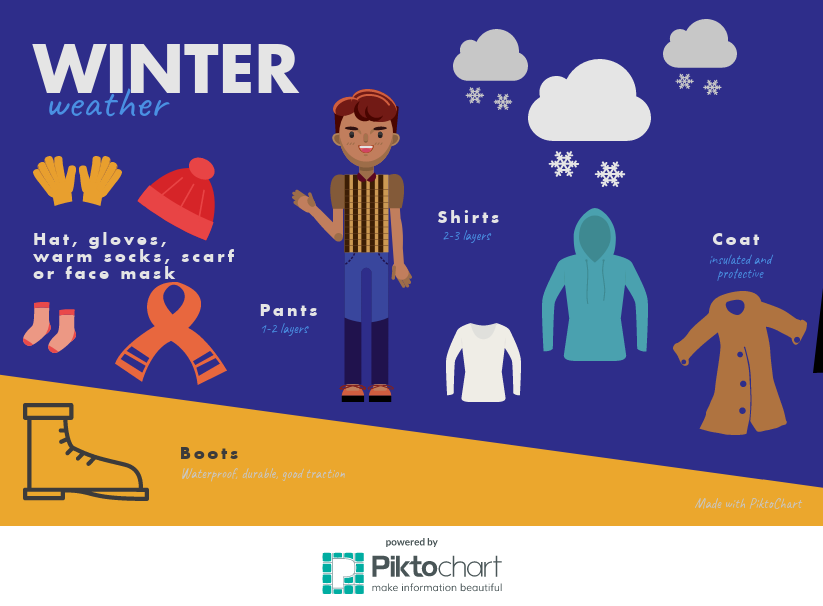Surviving the sub-zero: Tips for winter on campus
January 23, 2018
Fighting against wicked winds and bitter cold temperatures can be a challenge, but the Kent State campus is no stranger to bitter winters.
It is important to be prepared when a winter storm is on the horizon, as a small storm can turn into a relentless blizzard at any time. 25 percent of all winter related fatalities are people that are caught off guard out in the storm, according to the National Weather Service.
To ensure your safety and well-being, follow these tips to prepare yourself for a winter storm.
Clothing, not coffee
Start the day with a warm breakfast. Food is what fuels the body to produce its own heat, so it is important to eat and drink regularly to prevent dehydration.
Although your morning routine may start with coffee, it is best to avoid caffeine in cold conditions. Drinking caffeine can hasten the symptoms of hypothermia on the body by restricting blood vessels, preventing blood flow to extremities such as fingers and toes.
Dress in warm, dry layers to maintain body temperature. Be sure to cover exposed skin as it could lead to frostbite or hypothermia, and cover your mouth so your lungs are not exposed to the severe cold. Layers of lightweight clothes can maintain warmth more than a bulky sweater, so add more layers when feeling cold.
Think feet
Living on-campus requires students to walk long distances in the cold.
Heather White, the grounds manager for university facilities, said students make the same winter mistake every year.
“Wrong footwear. Students also make the assumption that all the sidewalks will be bare pavement all winter,” she said.
When walking on campus, it is crucial to be careful on icy sidewalks. Slipping and falling can result in serious injuries. Invest in good winter boots that will hide exposed skin.
Identify Frostbite
Students should also be aware of the dangers of frostbite. Frostbite occurs during severe temperatures, and has heightened risk when the windchill is -50 degrees or below. As a result, the body cuts off blood flow to the nose, ears, toes and fingers to conserve heat for vital organs.
When encountering frostbite, there will be numbness, and ice crystals may begin to form on skin. It may also feel warm, although not defrosted, and begin to change colors.
Once frostbite starts to form, it is vital to get inside and use warm, not hot, water or body heat to defrost the wound. If the frostbite is severe, be sure to seek medical attention.
Take Advantage of your Resources
Try to stay out of the wind, if possible, to decrease the risk of frostbite. If it is too cold and windy outside, use transportation, such as Portage Area Regional Transportation Authority.
PARTA buses stop at various locations around campus, with services running every six to 12 minutes. Stops and schedules can be found using the KSU mobile app.
The university has taken extra precautions to ensure the safety and well-being of students on campus by starting preparations in the fall.
“All of our equipment is inspected and prepped in October for winter use. We order our salt in September to make sure we have enough on hand,” White said.
“A lot of our challenges come from when the the weather changes, whether it is dipping even colder, below the effective layer of salt, or from rain, to ice and snow,” White said. “Sometimes if we know we are expecting a lot of snow, we will let staff know to report early, but if we aren’t expecting snow and the weather pattern shifts we can be caught behind the curve. Whenever we can, we plan for snow events.”
Chloe Forbes is a feature writer. Please contact her at [email protected].












